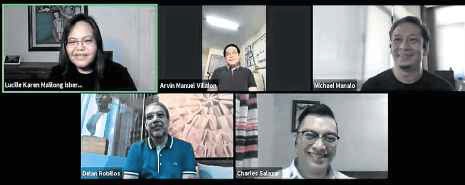
Just like health front-liners, there should be heritage front-liners during pandemics and disasters.
This was the call of cultural heritage planners and advocates in the online conference, “That Thing Called Pamana,” organized by the National Commission for Culture and the Arts (NCCA) and Filipinas Heritage Festival Inc. recently to mark May as National Heritage Month.
Cultural heritage proved “essential” in making people cope with anxieties while on lockdown, said Arvin Manuel Villalon, consultant for cultural mapping of the NCCA and a member of the Technical Pane for Cultural Education of the Commission on Higher Education.
He explained that during the enhanced community quarantine (ECQ), people turned to Christianity and rituals because “religion is an intangible cultural heritage.”
Villalon said cultural heritage could also help in “normalizing” the situation post-new coronavirus disease (COVID-19).“Heritage is one way of restoring normalcy,” he said. “Heritage comes from a sense of identity and rootedness.”
“Religion brings back old memories and they bring back normalcy,” he declared.
Villalon cited the cancelation of the Panagbenga flower festival in his hometown of Baguio City.
He said the locals didn’t mind because Panagbenga was a mere tourist showcase.
But there was no canceling Holy Week and Easter for Baguio City, Villalon said. He said locals closely followed the Holy Week observances through the Internet.Villalon explained that “synthetic celebrations” like Panagbenga cater only to tourists.
“The test of celebratory events is if the community values them,” he said.
Virtual tours
Delan Robillos, cultural-mapping trainer and former head of the NCCA National Committee for Art Galleries, agreed.
A psychologist and art dealer and curator, Robillos emphasized the importance of “intangible cultural heritage” such as religious rituals, literature and communal dances, practices, and observances in providing “healing” or “therapy” to cope with the stress of the lockdown.
He said that galleries and museums provided “virtual tours” of their collections, classified as “tangible cultural heritage,” during the ECQ.
Robillos added that even one town in Bulacan province held a virtual parade or religious procession that fostered communal “solidarity” during the pandemic.
“Can we have the concept of a heritage front-liner?” asked Villalon.
He explained just as there are no restrictions to health front-liners coming to the aid of patients, heritage front-
liners should operate “without limitations” to promote and protect cultural heritage during emergencies.
Karen Malilong chair of the Nayong Pilipino Foundation and former head of the NCCA’s National Committe on Monuments and Sites, agreed.
“Cultural heritage is a source of strength,” she said. It should not be on the “fringe” of society’s concerns, she added.
Malilong said Filipinos ought to go back to the original meaning of holiday. “There is no work so people can remember and reflect,” she said.
Charles Salazar, head of the Cultural Heritage Section of the NCCA, agreed.
He said that religious and cultural celebrations during the ECQ, such as the Buwan ng Panitikan (National Literature Month), were “somber, solemn, and meaningful.”
“Heritage is what survives the test of time,” Salazar added.
Open spaces
Architect Mico Manalo, NCCA commissioner for cultural heritage, said the ECQ was welcome relief for built heritage.
“It seemed to have put a stop to demolitions (of presumed important cultural properties),” he said.
And because shopping malls wouldn’t be able to operate on full capacity as before because of social distancing and remaining quarantine measures, “developers are rethinking,” he said.
He added that the pandemic had shown that Metro Manila needed “open spaces” to let the lungs breathe and to recharge psychological batteries.
“Now we see the value of open spaces,” said Manalo “We are going back to basics.”
Malilong said that because of the lockdown, more attention should be given to “natural heritage and seeing that it heals.”
Displaced culture workers
Malilong and Villalon lamented the economic displacement of artists, cultural workers, tourist guides, and “craftsmen and women.”
Malilong said even traditional weavers in the regions were affected.
Chair Arsenio “Nick” Lizaso last May 22 had announced that the NCCA was coming up with a P76.8 million assistance package for displaced freelance artists and cultural workers.
Malilong and Villalon said many cultural workers applied for aid.
“The challenge now is how to make creativity and craftsmanship “sustainable” professions, said Malilong.
Manalo said the lockout hastened the “online migration,” so that even museums were offering “virtual tours.”
“But it is different with tangible heritage,” he said. “You cannot wean heritage workers away from going to the sites.”
“We’re hopeful we can go back to the old buildings but with safety precautions of course,” he added. INQ